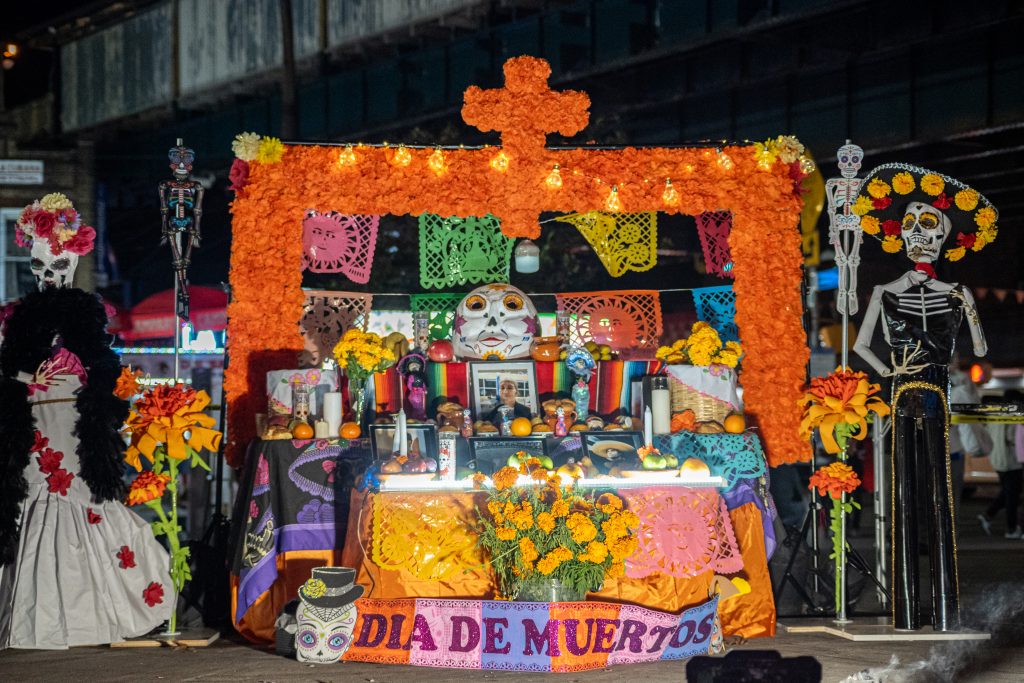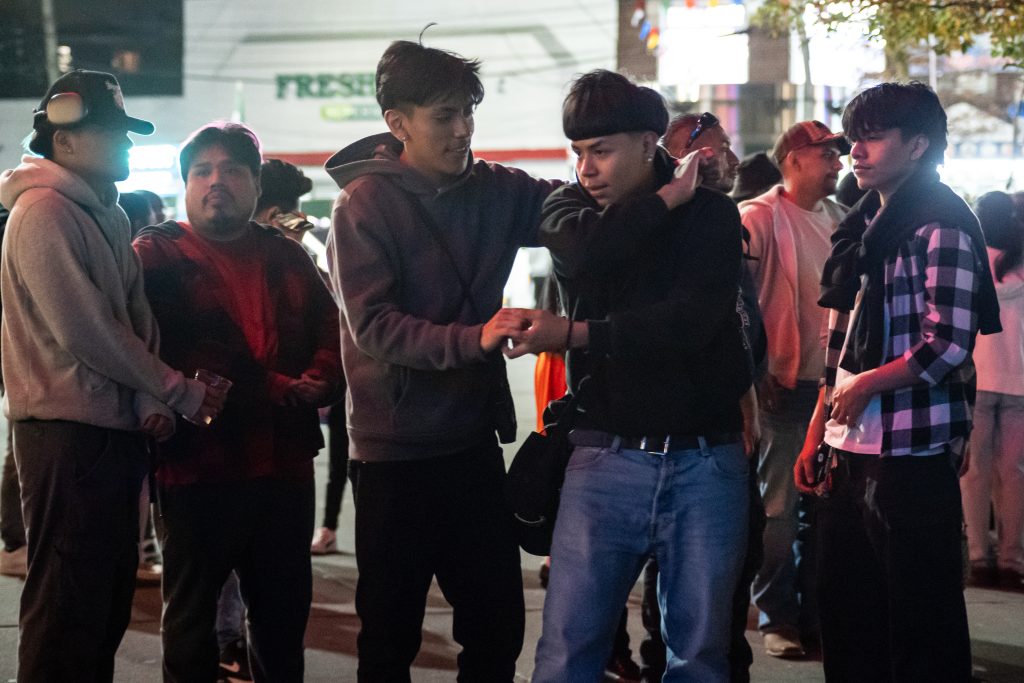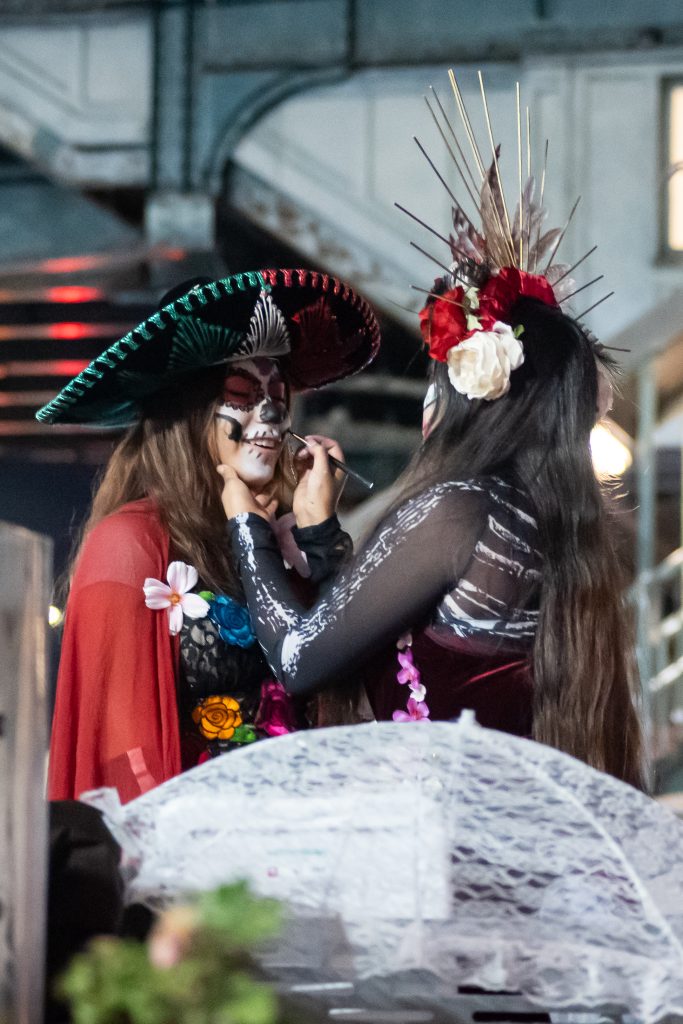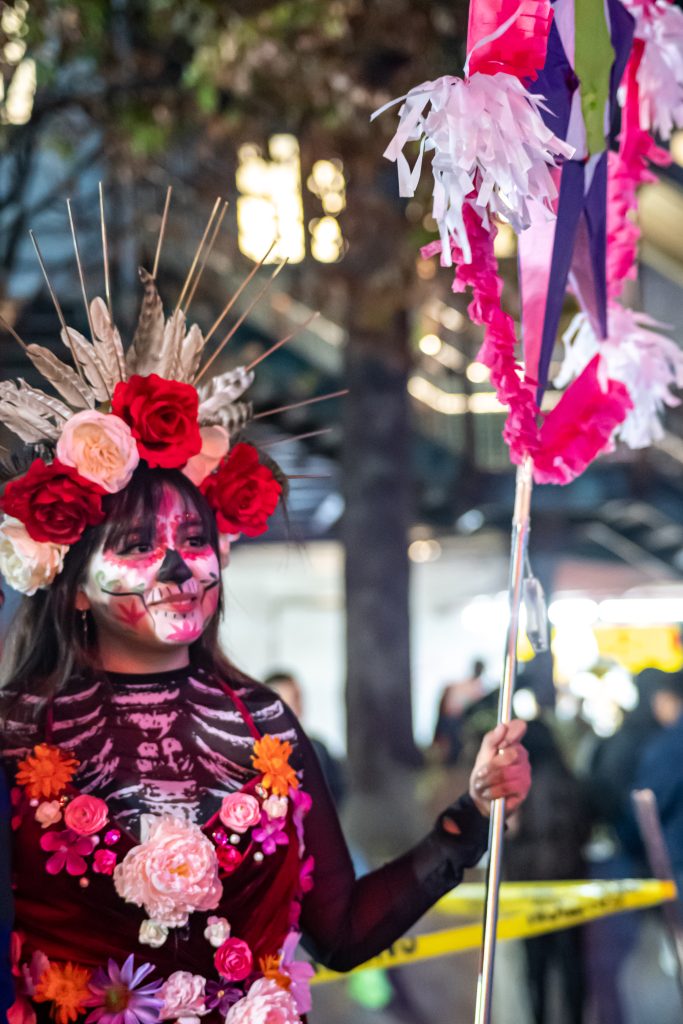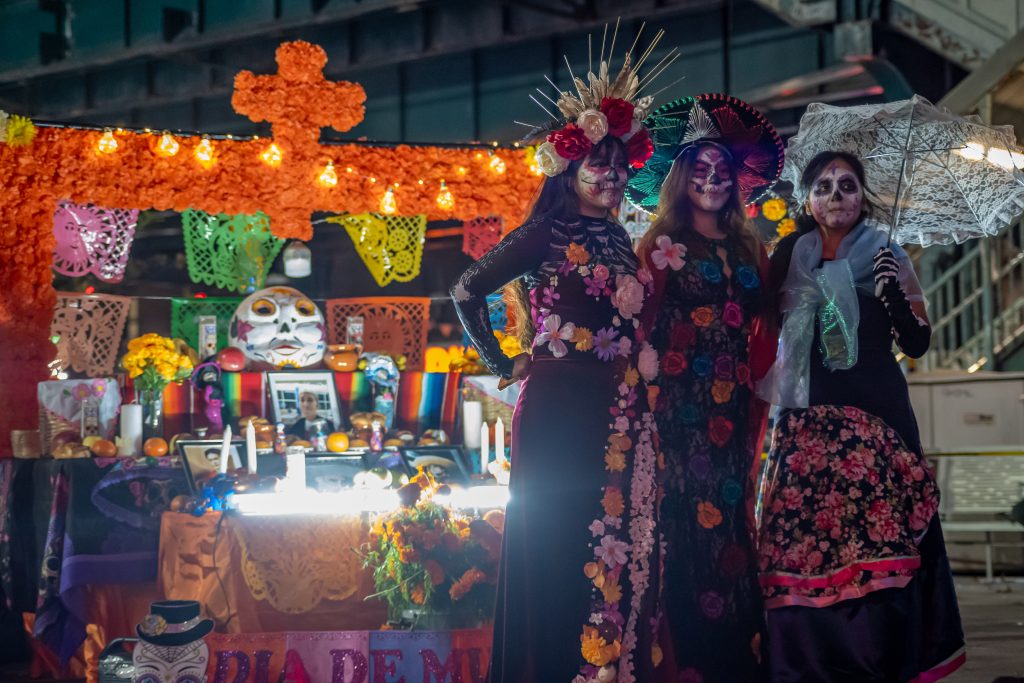
By Alice Moreno
On November 1, the Queens Economic Development Corporation in collaboration with AVA (Asociación de Vendedores Ambulantes, or “Association of Street Vendors” in English) hosted their fourth annual Día de los Muertos (Day of the Dead) event. Intended to celebrate and honor the deceased by inviting their souls, briefly reuniting with the living for a couple of days, Corona Plaza — located at 40-04 National St. — was filled with pride that night. The plaza was surrounded by an array of Mexican and Central American delicacies and trinkets offered to passersby, all courtesy of AVA.
Beginning at 6:00 p.m., guests were welcomed by hosts draped in costumes; long dresses with decorative imagery of the skeletal body, covering their shoulders with shawls of vivid colors such as red. Their faces were painted to look like sugar skulls and their heads were adorned with vibrant flower crowns of roses with thorns sticking out on the top to create a crown-like effect. The hosts danced all night to traditional Latino music; guests were even invited to dance along, even having an audience member become a makeshift MC to invite and entertain the public.
“It’s all about remembrance, and […] honoring those who have passed,” said Mark Saldana, the guest-turned-MC for the night in question. “And […] keeping their legacy [alive] within the family, whether it’s like a pet, a family member, or someone that you look up to […] just making sure that you know they’re still alive within your heart [and] within your soul.”
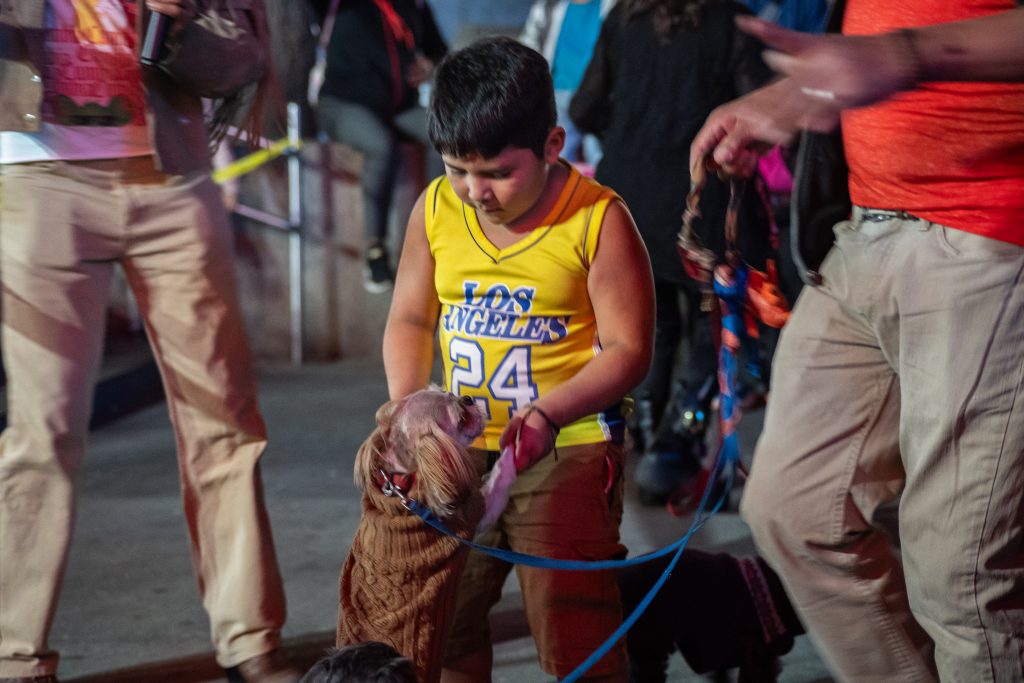
In the middle of the plaza stood the Ofrenda (“Offering” in English), an altar dedicated to those who have passed. To welcome the spirits, the altar is adorned elaborately with bright neon oranges and pinks, bringing the person’s spirit alive. Sugar skulls — known as Calaveras — furnish the ofrenda, decorated in vivid colors made of sugar molds to create unique designs. Marigold flowers (known as cempasúchil) flow throughout the altar, its odor meant to attract spirits. Food is also on display here, offering pieces of bread and fruits to the deceased.
Most importantly, right in the middle of the altar sat a picture of Lucia Fabian’s — the organizer — mother, who passed in 2022. Alongside her mother’s picture also sits various images of well-known Latino artists, such as artist Frida Kahlo and singer Vincente Fernandez.
As the night went on, the Dia de los Muertos event had a variety of shows to entertain guests. They started with a Mexihcah, a traditional Aztec dance; Danza Folclórica (Folkloric Dance), with different dances based on different Mexican regions; a New York-based dance troupe titled “Grupo Atl-Tlachinolli” with dances focusing on the Tolteca and Chichimeca cultures of Mexico; and to cap off the celebration, a Mariachi band — an 8-10 people group that play Ranchera music with themes ranging from love to politics, to death.
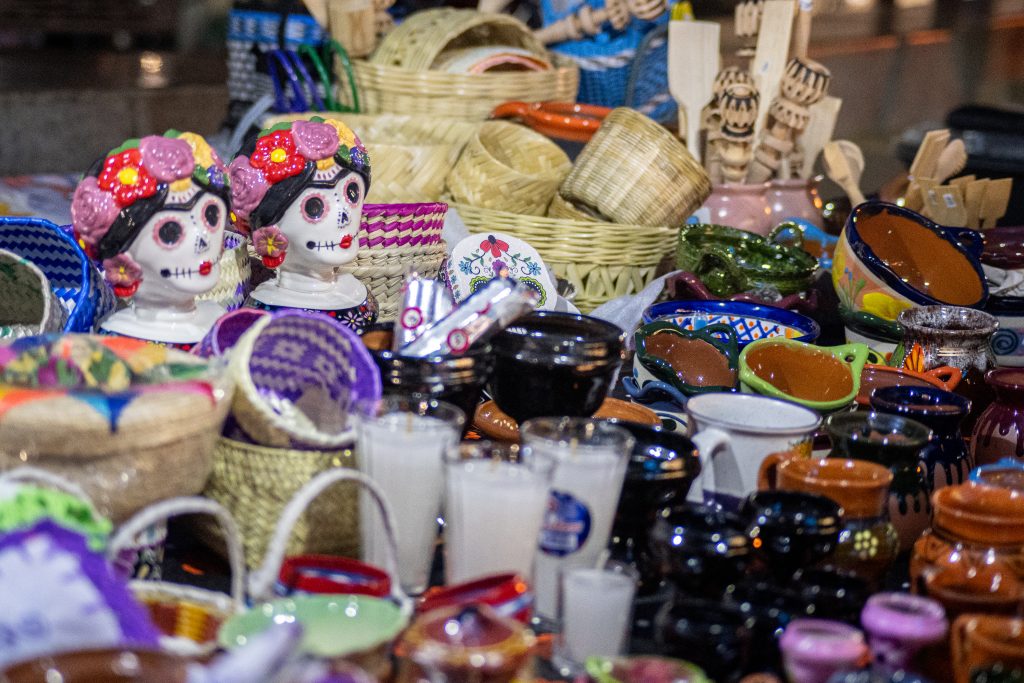
Traditionally, Dia de los Muertos is held on Nov. 1 and 2, though others may start as early as Oct. 31 or as late as Nov. 6th. Not only does it celebrate the spirits of those who long left us, it also celebrates how beautiful life is. Regardless of whether guests were Latino or not, everyone from different origins and backgrounds were invited to honor the dead.
“We just want everyone to know that today is a day to remember your loved ones in a good way and a happy way,” said Jocelyn Fabian, daughter of organizer Lucia Fabian and one of the hosts dressed in costume.
